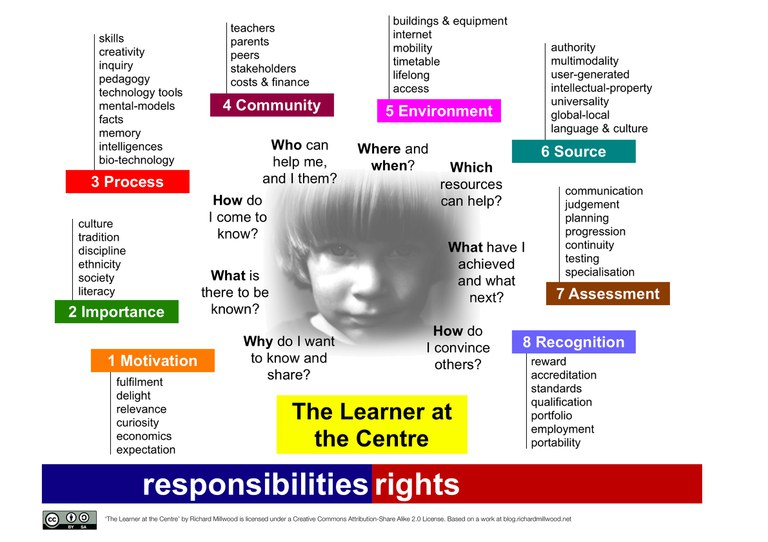[A3] The Learner at the Centre
Focussing on the learner's perspective meant imagining a complete set of essential questions that they need answers to in order to progress in education. Normally these questions are not asked, the answers are simply supplied by the educational organisation. But by taking this perspective, gaps in the designs I developed for educational organisations could be identified and closed in the development process. For example, a design may make provision for formative assessment (7 Assessment, in the analysis) but forget that it may also be important have some means to gain an award (8 Recognition) through summative assessment.

Figure 11: The Learner at the Centre
Few real learners will articulate such concerns in the form of questions, partly because we usually do not ask them to participate in such issues, but by posing these questions as ‘constants’ we may test future proposals more effectively than starting from the status quo of a current or historical solution. In this diagram, the learner is imagined to be concerned with eight questions, relating to eight areas that an innovator should consider if they wish to make an impact on learning with an invention in technology or practice.
But the issues at the bottom of the diagram – responsibilities and rights – are at the heart of the modern dynamic that education and technology present. Learners’ entitlement to access knowledge was at the heart of the development of the National Curriculum, but we must add to that the entitlement to opportunities for access, creativity and communication and the responsibilities that a free and open education brings.
(Millwood 2009)
The lists of issues related to each question will form part of a future research & development to elaborate this analysis more fully, but the question "Who can help me and I them?" (4 Community) led me to consider the other stakeholders in education, analysed in the next section [A4] Stakeholder perspectives in education.
(Words: 374 )

